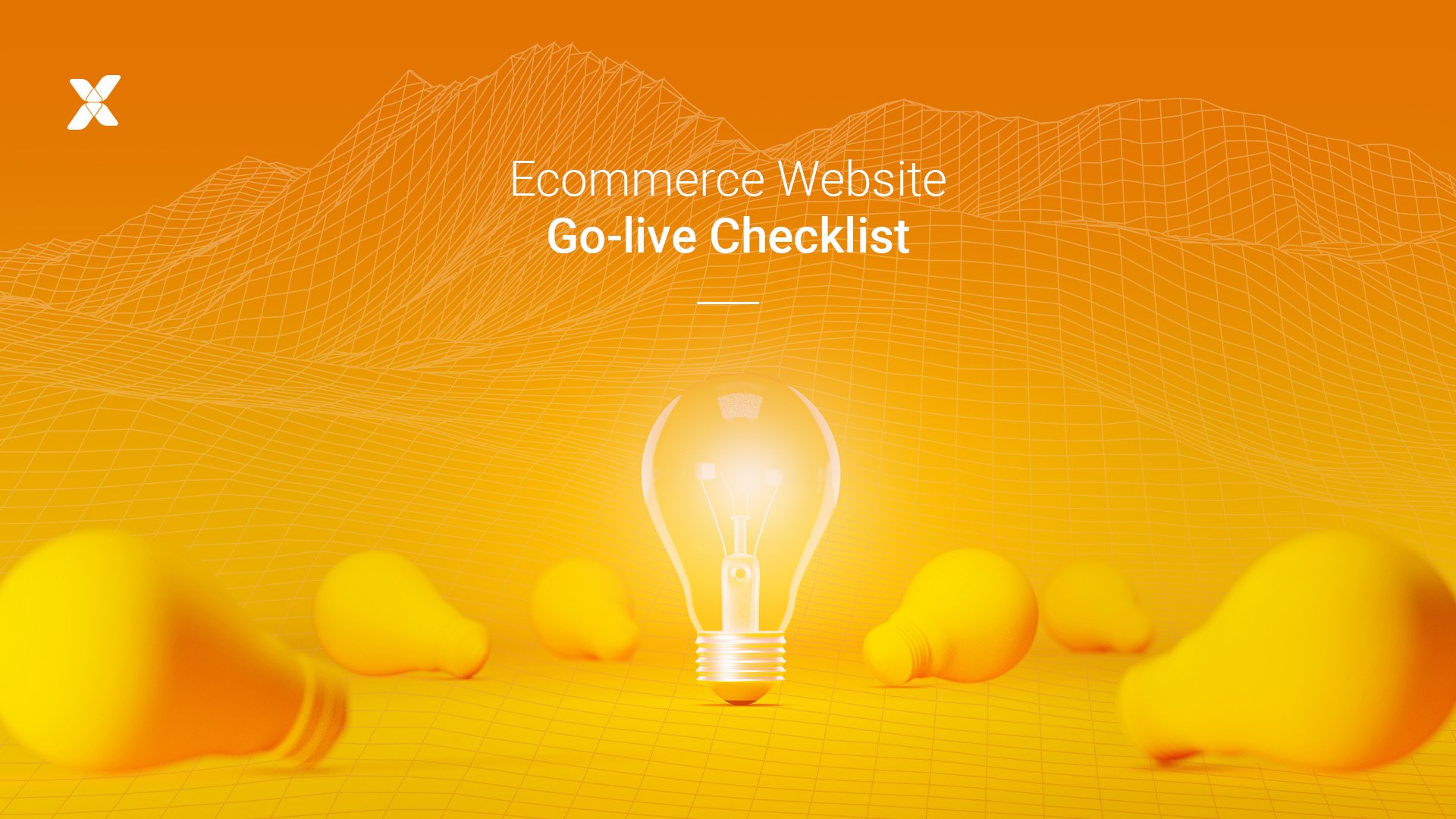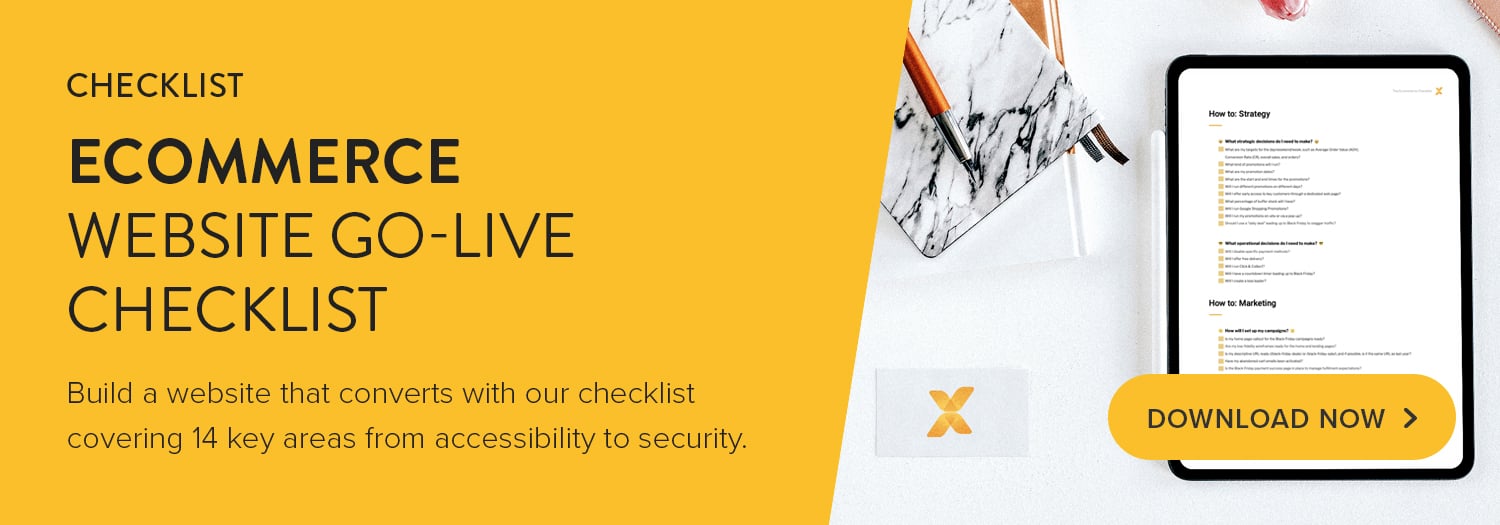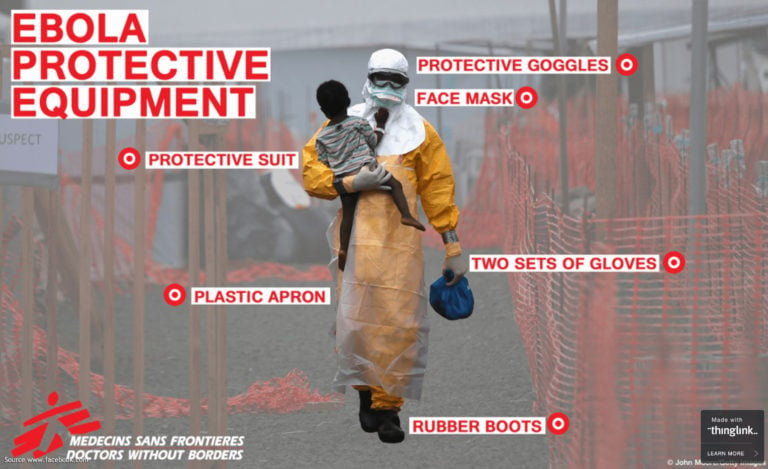Whether you’re new in the digital commerce arena, or simply re-launching your solution on a new platform, it’s important to ensure the success of your new venture. Our comprehensive ecommerce website go-live checklist will help you keep track of everything vital to ensure an excellent website launch.
TABLE OF CONTENTS
Digital commerce snowballed after the pandemic, driven onwards by the new shopping habits and changing expectations of consumers. The United States saw a substantial jump by the close of 2021, with an increase of 14.2% in digital sales. Research data shows that we can expect a 16.8% increase in online sales worldwide in the coming years.
Due to this fundamental shift in the commerce landscape, businesses without a digital presence must prepare to meet their customers online. According to McKinsey, a seven-year acceleration occurred in the adoption of digital products and services across regions. There’s never been a better time to enter the digital marketplace and make the most of the immense potential that it offers.
Download your checklist and keep reading for the nitty-gritty details of covering your bases.
Bracing for the Big Launch
Every organization regards a website go-live as a huge moment. You’ve likely got a billion thoughts flying through your head as you analyze each corner of your site and scrutinize the design, layout, and performance. Will our customers find the products they want? Will they be able to pay with their preferred method? Will the site display correctly for mobile? Will the load speed be quick enough?
The questions will keep pouring in as you approach and implement the go-live of your website.
To keep your thoughts on track, we have compiled a checklist covering ten key areas.
1. Communication
Customers consistently expect more from digital commerce. Shoppers no longer focus solely on the price tag when making buying decisions. Factors such as brand story, social proof, and prompt customer service play a significant role in driving sales and building customer loyalty. However, excellent communication acts as the ultimate key to creating memorable customer experiences, forging long-lasting relationships, and fostering growth.
Display your contact details prominently, and make sure to include important information such as shipping, returns, and refunds policies. Set up an email notification confirming the purchase, and the shipment of the product along with relevant tracking details.
Additionally, think of other ways shoppers may connect with your brand. Send out newsletters, or use social media to humanize your company and provide social proof that you offer a great product. The “About” page allows you to leverage your brand story and present yourself as a reliable and responsible organization.
Bear in mind that anyone can access your content. Pay special attention to metadata, alternative text, and configuring forms with associated labels, not placeholder text. This way, you can ensure your communication efforts reach all of your visitors regardless of their accessibility needs.
Refer to this quick communication checklist:
- Contact details are correct and easy to find
- Rating and review systems in place
- FAQ page in place
- Links to social media accounts present
- Shipping, returns, and refund policy are clear and easy to find
- Purchase confirmation and abandoned cart emails in place
- About page in place
- Newsletter subscription option in place
- Website tested for screen reader
- ARIA landmark roles in place
- Alternative text in place for images
- Page titles and metadata is unique and descriptive
- All forms have associated labels, not placeholder text
- Color contrast tested
- Links are easily recognizable and have a clear focus state
- Website meets appropriate level of WCAG compliance
Related Reading: Optimize Your Digital Customer Experience in 5 Practical Steps
2. Content
Content acts as the heart of each and every interaction your customers experience with your company. From product images to blog posts and website copy, content drives the conversations surrounding the brand.
Consistency makes for great content, so ensure consistent formatting across your pages and utilize the same style for your copy and images.
Minute details, like spelling errors or missing product photos, can greatly impact the overall impression of your brand. Make sure to check your content again and again. Try different strategies, such as working through a page from the bottom, to help you spot hidden errors.
Don’t forget your 404 page; when a customer ends up on a 404 page, it creates an additional step in their purchasing journey and it may cause them to leave your site.
Deploying a custom 404 may help turn this wrong step into an opportunity. Incorporate your branding on the page, provide the site visitor with a list of other useful resources (which helps with SEO), or use it as an opportunity to place a call to action.
Refer to this quick content checklist:
- The text has been checked for spelling, grammatical, and factual errors
- All pages have content
- Images and videos are working correctly
- Placeholder text removed
- Custom 404 page in place
- Detailed product description in place for all products
- Product pictures in place for all products
- Stock levels visible and accurate
- Sizing and color selection works as expected
Related Reading: 7 Keys to an Effective Ecommerce Content Strategy
3. Design
Before you begin promoting your site to the masses, inspect your site from a design angle. Even with the best products in the world, a design malfunction holds the power to derail your user experience, and thereafter, your brand.
Search for any inconsistencies which may affect the browsing experience. Look at the line-height, contrast, font type, and paragraph styles. Ensure consistency across pages, and ease of navigation. Don’t neglect common elements that customers expect, such as linking your logo to the homepage, and other branding elements such as a Favicon.
Refer to this quick design checklist:
- Favicon in place
- Logo links to home page
- Website navigation works smoothly
- Formatting is consistent across all pages
Related Reading: Top 13 UX and UI Trends in 2022
4. Payments
A customer may find your site easy and quick to navigate from the landing page all the way to checkout. However, your efforts will be all for naught if your customer cannot complete the purchase.
Double-check the availability and functionality of all your payment methods and integrations. Then, complete a few test purchases from a variety of sources, such as via credit card, debit card, and PayPal. Ensure that the transactions go through smoothly and while you’re at it, confirm the functionality of your order flow as well.
If you allow customers to use coupons, voucher codes, or store cards at checkout, ensure the relevant cart rules work as expected.
Refer to this quick payments checklist:
- Shipping rates are displayed during checkout
- Discount codes can be applied in the cart
- Cart’s content can be edited
- Prominent payment methods are available
- Guest and existing member logins available
- All test accounts should be updated to live
- For payment gateways, live tests should be made
- Checkout buttons are clearly visible
- Checkout works on different devices
- Detailed confirmation page in place before checkout
Related Reading: 7 Benefits of Offering Cryptocurrency Payments in Ecommerce
5. Performance
To make the most of your new website, your site needs to load quickly and be easily usable.
Pay special attention to site performance, as it significantly impacts the customer experience on your website. For example, if your site takes too long to load, almost all of your potential customers will bounce.
To ensure optimal performance of your new solution, set up a backup system, check your domain name, and assess your web hosting situation.
Optimize your images and videos to ensure faster loading times and create less of a drain on your hosting requirements. Additionally, minify and combine your HTML, CSS, and JS files and ensure the installation of only necessary fonts, character sets, and plugins.
Refer to this quick performance checklist:
- Domain name and web hosting set up and linked
- Automatic backups configured and working
- SSL certificate installed
- Files fully integrated and version control and deploy path in place
- HTML, CSS and JS files minified and combined where possible
- Images and videos have been optimized
- GZIP compression enabled
- Only necessary fonts, weights, and character sets are installed
- CDN/caching incorporated as required
- Website’s performance tested and optimized
Related Reading: 7 Tips to Optimise Your Website Performance
6. Compatibility
Digital commerce allows your customers to access your products whenever and from wherever they want. And while this makes your brand accessible to a vast new market of customers, it also means you must put yourself in your customers’ (digital) shoes–think desktop, laptop, tablet, mobile, and more.
An omnichannel experience ensures that you meet your customers across channels, as they land on your site from different browsers, devices, and apps. US retail giant Target implemented an omnichannel strategy in 2020 and saw their sales increase by 24.3% and their digital sales skyrocket by 195%. Target found that their multi-channel shoppers spent 4 times as much as their in-store counterparts, and 10 times more than their online consumers.
In short, ensure a consistent user journey across your channels.
Optimize your site for each device and make sure it looks perfect on screens of all sizes. On mobile, look for: cropped images, font sizes, navigation headings, and the length of pages. Small things can turn a good customer experience into a brillant customer experience.
Approach your site from different browsers and across various search engines. This will enable you to pick up on any discrepancies and act on them.
Refer to this quick compatibility checklist:
- Run through the Mobile-Friendly Test
- Website tested on mobile devices and tablets
- Website tested in targeted browsers
- Favicon and touch icons present in mobile devices
- Website tested for visitors with Javascript disabled
Related Reading: Seamless Customer Experience: Why it Matters and How to Deliver
7. Security
With a vast boom in digital sales comes bad actors who use automated tools to carry out ransomware attacks, malware attacks, and more. If your private data and the sensitive data belonging to your customers falls into the wrong hands, it could mean the end of your business, with fines, substantial monetary loss, and reputational damage.
Bolster the security of your digital solution now and stay several steps ahead of digital criminals.
Securing your website starts from setting it up according to security best practices. Request an SSL certificate, secure private areas by hiding them from search engines, and avoid using default admin URL and CMS usernames.
To prevent vulnerabilities due to any known platform weaknesses, make sure to use the latest platform version, and apply any available patches immediately.
With your site up and running, make sure to log applications, infrastructure, and security events. This alerts you to any irregularities, allowing you to quickly investigate possible threats. Employ malware and data-leak protection tools to stay on top of irregular activity and act on a potential breach before it burgeons into a larger issue.
Refer to this quick security checklist:
- The latest version of the eCommerce platform is used and/or all patches are applied
- Web Application Firewall in place and configured following best practices
- No critical or high-risk vulnerabilities are detected
- Ecommerce platform is set up in accordance to best practices
- Infrastructure software is updated to the latest version
- Application, infrastructure and security events are logged
- Malware and data leak detection tools in place
- Secure areas are locked and no accessible by search engines
- Default admin URL is changed
- SSL certificate is requested
Related Reading: How to Keep Your Online Store Secure
8. Legal
Much like security, failing to ensure your web store meets legal requirements can bring dire consequences. Make sure you comply with local laws and provide an easily accessible privacy policy and terms and conditions on your website.
Keep in mind that your legal obligations depend on your specific circumstances—the local regulations, tax requirements or specific product types. On top of that, laws and regulations change constantly, so we recommend you involve a legal professional in your website planning.
Refer to this quick legal checklist:
- Terms and conditions in place and easy to find
- GDPR compliant privacy policy in place (in Europe)
- GDPR compliant cookie policy in place and banner created
- Licence in place for any external content used
Related Reading: Vaimo’s Personal Roadmap for GDPR
9. Functionality
Before you begin receiving traffic onto your new website, ensure it works as expected. If your visitors find your website less than intuitive or lacking functionality, they may turn to a competitive site instead.
When checking your website’s functionality, pay specific attention to forms and other ways for customers to contact you. As discussed above, communication helps provide a great customer experience on your website. A faulty CTA or broken form may prevent your customers from getting in touch with you!
Refer to this quick functionality checklist:
- Links, forms, and CTAs work correctly
- Required fields tested
- Forms have confirmation URL or event tracking to track submissions
- Forms process correctly with Javascript disabled
- Product data is updated from an external source, inventory, prices
- Backend processes—integrations work correctly e.g., orders arrive at the WMS
- Search working correctly
- XML Sitemap is generated
- Data feeds are working e.g, to Google Shopping
- Custom features are all working
- Forms are sent to the right person
- Input validation (min/max lengths, character limits) reviewed
- Expires caching activated
- HTML W3C valid
- CSS W3C valid
- No Javascript logs, errors, or warnings
- SEO
- Noindex and nofollow removed to be accessible through search engines
- Robots.txt file not blocking search engine spiders
- All versions of URL redirecting to the same format
- Clean URL rewrites in place
- 301 redirects set up for pages which no longer exist
Related Reading: Ecommerce Development
10. Analytics
After all the time and effort spent setting up an amazing digital commerce solution, you must ensure you receive insights from it so you can grow your business with ease. Start collecting data right away to empower yourself with hard data about your progress.
Analyzing measures, like the number of visitors on your ecommerce website, which categories and products they frequent, and what the average user journey looks like, provides insights about your customers that help you tweak things for a better customer experience and higher profit.
Start by linking Google Analytics or Search Console to your website and setting up tracking for top KPIs—conversion rate, average order value, churn rate, store speed, and net profit.
Refer to this quick analytics checklist:
- Analytics tracking in place
- Event tracking set up for key metrics
- Google analytics/search console account set up and linked
- XML sitemap in place and added to root of website
Related Reading: Ecommerce Analytics
Need a Partner to Help?
At Vaimo we have experience partnering with many well-known brands across the world in helping them launch their websites. We offer expert advice on anything from strategic goals, website security to proactive performance tracking.
We build long-lasting partnerships with our clients to build and maintain digital commerce solutions that offer unparalleled customer experience. Set up a meeting with our team and learn more about how Vaimo can help drive your success in digital commerce.












